The Phanteks Enthoo Pro Case Review
by E. Fylladitakis on March 30, 2015 8:00 AM EST- Posted in
- Cases/Cooling/PSUs
- Full-Tower
- Case
- Phanteks
The Interior of the Phanteks Enthoo Pro
Phanteks placed a lot of thought and resources while designing the interior of the Enthoo Pro. With the exception of the white stock fan blades, everything else in the case is black. A very wide opening on the motherboard tray allows for the installation of advanced CPU coolers without having to remove the motherboard. The opening is so large that if the user were to install an ITX motherboard, the board would barely cover about 60% of it, leaving a large gap to its right side. Flex-ATX and Mini-ATX motherboards will leave a small opening to their right as well. Many cable openings surround the motherboard tray, all covered with rubber grommets.
A cover for the PSU compartment is a rare addition. It has no real function other than the aesthetic upgrade but it is certain that modders will appreciate its presence. The compartment has two openings, a large one on the motherboard tray and a smaller one at the front of the cover, both covered by rubber grommets. The PSU sits on six soft feet that will absorb any vibrations. The installation of the cover is optional, allowing the user to showcase their PSU or install it with its fan facing upwards if need be, as well as to make compatible the case with fanless PSU designs.
Another interesting feature of this case is the mounting points of the fans. Most mounting points do not have screw holes but "rails", allowing the adjustment of the fan's position. The most visually obvious example is the mounting point of the rear 140mm fan, which allows the fan to move as much as four centimeters higher than its original position. This is true for every fan mounting point of the case - only the movement tolerance differs.
A large metallic wall conceals the two HDD cages and forms the three 5.25" bays. Plastic mechanisms lock the 5.25" devices in place and screws can be used for a more permanent installation. A metallic badge with the company logo can be seen near the bottom of the wall and that will be virtually the only thing visible from the front window of the side panel. The HDD cages can be removed to increase the clearance for expansion cards from 34.7cm to 47cm; however, the sidewall may be blocking the power connectors of the card if they are on the side.
The two HDD cages are removable from the right side of the case. Each cage can hold up to three devices, which can be either 3.5" or 2.5" drives, and has a foam pad at the rear to ensure that no vibrations are being transferred to the sidewall of the case. The drive trays are interesting, offering tool-less installation for 3.5" drives via winged pegs that snap at the sides through anti-vibration rubber rings. Optionally, screws can be used to secure 3.5" drives on the tray. The use of screws is obligatory for 2.5" devices, which obviously cannot be secured using the winged pegs.
The rear of the motherboard tray is spacious and outstandingly well designed. Phanteks installed cable ties across the two cable paths that should reduce the time of cable management significantly and keep everything very tidy. The only problem is that the CPU 12V power cable needs to be very long (or an extension needs to be used) in order to reach the top left side of the motherboard.
Two 2.5" drive trays can be installed to the right side of the case but only one tray is supplied and the second is optional - which is very strange, as the cost of a metallic tray should be very small compared to the hassle this creates for everyone that has more than one SSD. A very basic but usable fan controller can be seen as well, which may be used to control up to six cooling fans, including that of the CPU cooler.
The fan controller connects to the CPU fan power header and, essentially, it just copies the PWM signal of the CPU fan header and uses it to adjust the speed of five more fans. It requires additional power from a SATA connector. This approach may be a little dangerous, as it controls the speed of the connected fans using the PWM signal of the CPU header alone - if the CPU is being kept cool by a very advanced cooling system, connecting fans that cool other components or all of the case's fans to the controller could result to overheating or stability problems.
By far the greatest feature of the Phanteks Enthoo Pro is nothing else but the chassis itself. The panels and parts of the chassis are not permanently bolted to each other - screws are holding the case together and it can be dismantled entirely if needed. For the average user, the ability to dismantle the case probably means nothing; however, this is a very rare ability that will surely drive the imagination of modders wild.
Black cables and parts are easily hidden inside an all-black chassis; therefore, for visual clarity, we are using an AX760i PSU with a red cable pack and white SATA cables for our pictures. Building a system inside the Phanteks Enthoo Pro is a very easy, as the case is very spacious and the cable management becomes an admirably easy process. It takes no more than a few minutes to assemble a basic system inside the Enthoo Pro, but we feel that its spaciousness will mostly be appreciated by those with systems that are more complex. We could not find any sharp or otherwise dangerous spots in or around the Enthoo Pro during our experience with it.
There is plenty of clearance between the components and parts of the case, allowing the cables to turn without too much tension and providing enough space for the installation of AIO cooler radiators. With a little careful cable routing, even an amateur can easily build a very tidy and visually pleasing system. The only concerning issue is the required length of the 12V power connector. As seen from our pictures, the cable of the AX760i was not long enough to reach the top right side of the motherboard, even though we ignored the predetermined cable path and went for the opening in a straight line. An extension cable is likely going to be necessary for the majority of users.


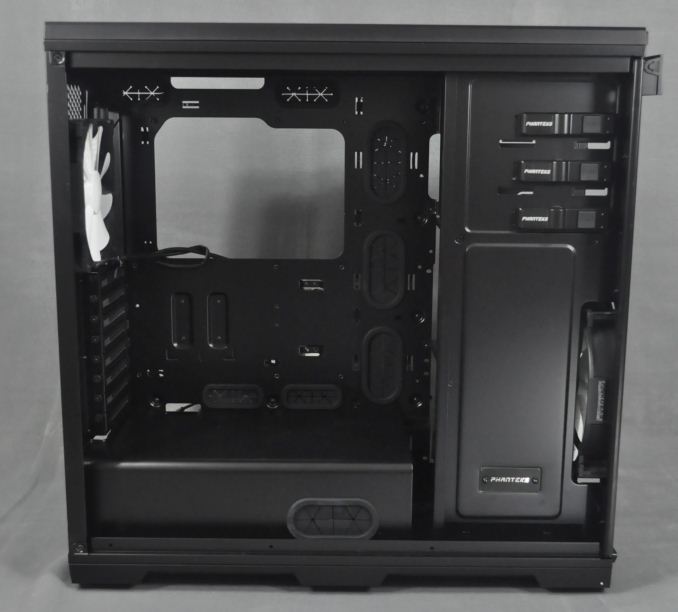
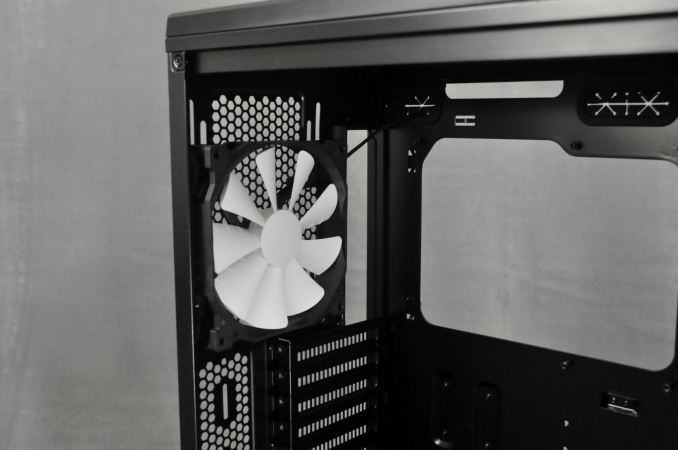
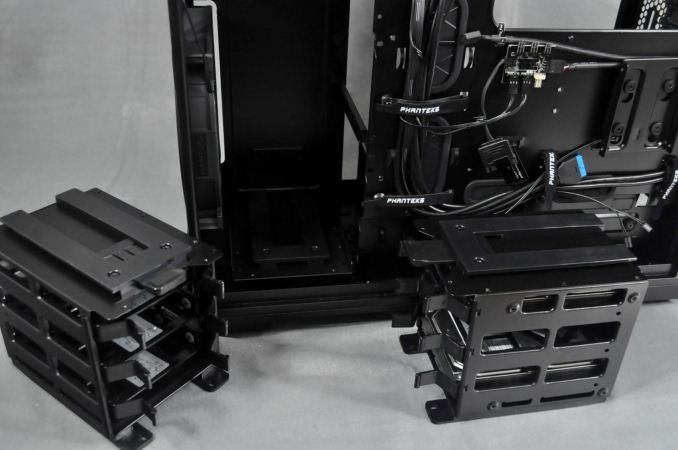
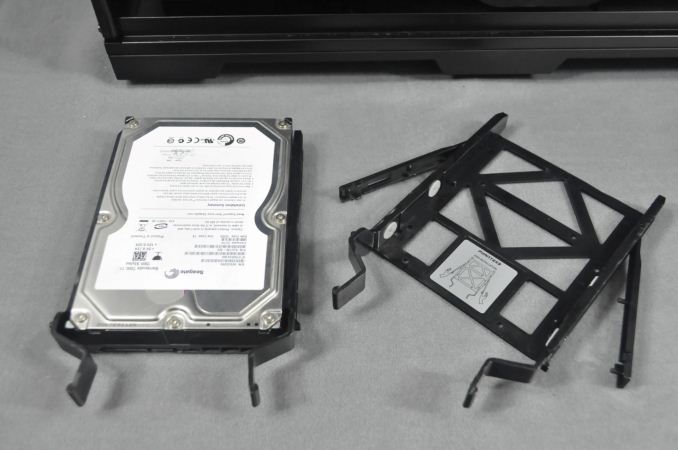
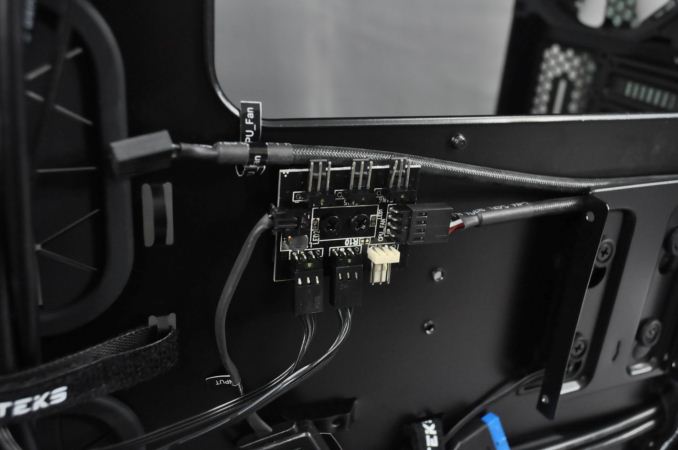






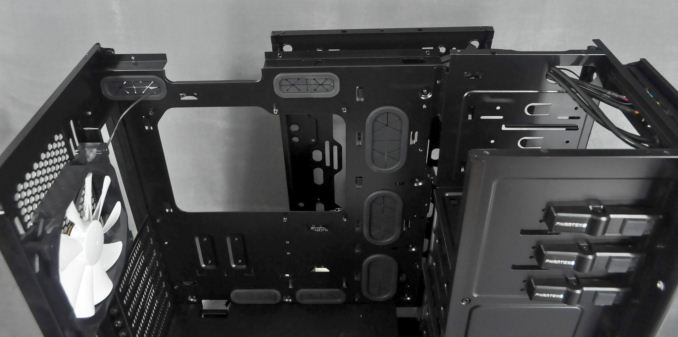
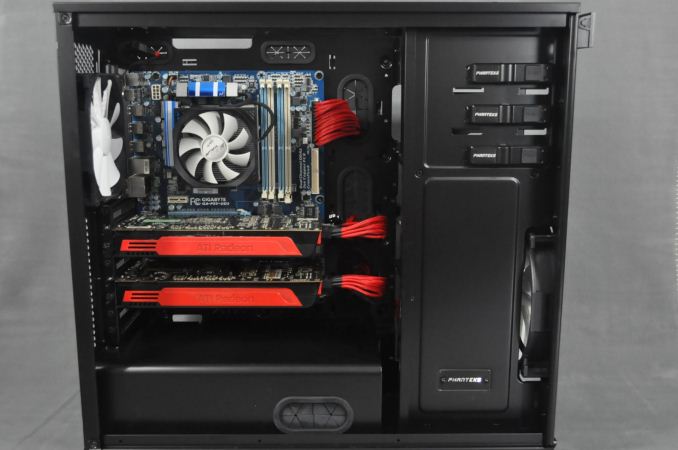








50 Comments
View All Comments
kepstin - Monday, March 30, 2015 - link
I think like the drawing on the box was in isometric perspective; the issue is that the picture of the box was taken at an angle. If you look at the side of the box straight on I expect it would look ok.Coffeehead - Monday, March 30, 2015 - link
True. It's an isometric projection. The proportional sizes of each line is preserved and each of the x,y,z axes are separated by 120°. It is supposed to make measurements easier to take for engineers, but the visual perspective projection is what we consumers are used to seeing because we want to buy what we see.It's also the basis of how the art illusion drawings of M.C. Escher used isometric projections.
DanNeely - Monday, March 30, 2015 - link
Is the severe face plate damage you're referring to just the scuffed up top front edge; or was something else broken too. The scuffing isn't good; but I'd've expected something to at least be cracked before it was called severe damage.DanNeely - Monday, March 30, 2015 - link
I'm not picking on this case in particular, since it appears to be an industry wide problem; but if you're going to build a case around bottom air intakes you need to use feet big enough to lift the case up above a carpeted floor. Having to suck air in through the carpet really reduces the total flow, and even with the case having a built in dust filter, after only a few months the intake of the PSU in a case I had like this got horrifying nasty. I've had boxes that went years before being blown out that had less dust in them. I'm not sure what I'm going to do with that case; probably either look for taller aftermarket feet somewhere, or drill new mounting holes in the back so I can flip the PSU over to point its fan up and draw air from the rest of the case instead.BillyONeal - Monday, March 30, 2015 - link
That's why Silverstone's FT02 is still one of the best cases ever -- it has its own "channel" in the side of the case to pull air in for the bottom intakes which works great for the carpeting problem.Dug - Monday, March 30, 2015 - link
Silverstone FT05 has a flat solid surface for the base, but the bottom case fans are about 2-3 inches up from that so you have air coming in from the sides and then up.bigboxes - Monday, March 30, 2015 - link
Funny about the illustration on the packing box. That said, this is one butt-ugly case. That power button is way too small and the top panel connectors should not be hidden under that door. Just something that will be left open anyways.xthetenth - Monday, March 30, 2015 - link
The power button isn't particularly small and isn't difficult to hit in the slightest. The door isn't in the way when it's open and being able to close it is kind of nice. I have the Luxe, which is one step up from that, and while I have a few minor quibbles about it, it was amazingly easy to put together a really nice looking build with it.Peichen - Monday, March 30, 2015 - link
Such a traditional and old design. I think an ideal case as mATX with 1x 5.25", 2x 2.5/3.5", 4x 2.5" drive cage. 2x 120/140/180mm fans w/filters. Open space around graphic card(s) and CPU cooler otherwise fully sealed to keep dust and sound down.Silverstone TJ08B-E is pretty close but the needs to be updated for SSD and better sealed.
eanazag - Monday, March 30, 2015 - link
But are you using multiple GPUs and have a north of 6 storage drives? I have a hot swap 4 2.5" drive add in that slides into a 5.25" and am considering a second one. I have a DVD burner. That means three 5.25" slots would make sense for me. I can do 2 though.I really don't see the point in 5.25" disc drives anymore being that large. I think they all need to be laptop type slim drives.
This is likely too big for you also.